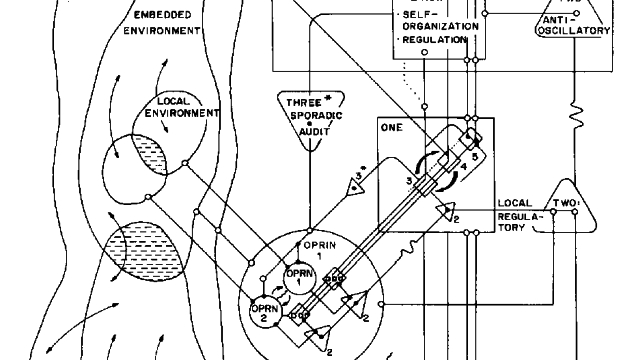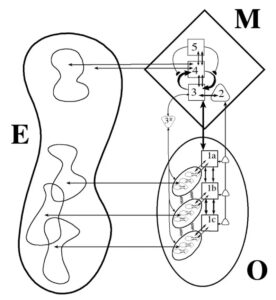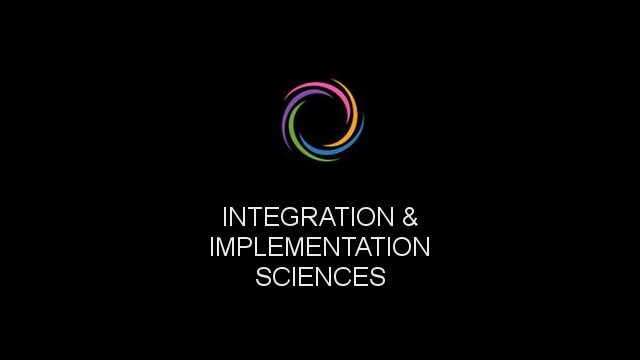
Viable System Model: A theory for designing more responsive organisations
By Angela Espinosa. Originally published on the Integration and Implementation Insights blog.
How can communities, businesses, regions, and nations – which can all be thought of as organisations – be designed to be capable of dealing quickly and effectively with environmental fluidity and complexity?
The Viable System Model, often referred to as VSM, is a theory that posits that a complex organisation is more capable of responding to a changing and unpredictable environment, if it is:
- composed of autonomous, effective, and agile subsidiary organisations,
- highly connected to each other, and
- cohesively operating with shared ethos, purpose, processes, and technologies.
A complex organisation therefore has multiple levels of nested organisations, each adhering to these principles.
The building blocks of the Viable System Model are five interconnected systems. These are illustrated in the figure below which depicts a simple Viable System Model, and which also shows the interactions between the organisation and its environment (E).
The two main components of the viable system model are the operation (O) and the management (M) and these apply to each nested organisation in the complex organisation. The operation is System 1 and is composed of three operational elements (labelled 1a, 1b, and 1c in the graphical model; there can be more in an actual organisation). The management is composed of Systems 2, 3, 4 and 5. The various arrows represent the many and often highly complex interactions among the five systems and between the systems and the environment.

An understanding of the theory begins with the observation that operational units must be as autonomous as possible. The Viable System Model proposes that any organisation is a cluster of autonomous operational parts which bind together in mutually supportive interactions to create a new, larger whole system.
The job of management is to provide the “glue” which enables this to happen. The role of the systems in management is as follows:
- System 2 deals with the inevitable problems which emerge as a number of autonomous, self-organising operational parts interact. There will be conflicts of interest which must be resolved. System 2 is there to harmonise the interactions, to keep the peace, to deal with the problems.
- System 3 is concerned with synergy. It looks at the entire interacting cluster of operational units and considers ways to maximise effectiveness through collaboration. System 3 ensures that the whole system works better than the operational parts working in isolation.
- System 4 ensures that the whole system can adapt to a rapidly changing and sometimes hostile environment. It scans the outside world in which it operates, looks for threats and opportunities, undertakes research and simulations, and proposes plans to guide the system through the various possible pathways it could follow.
- System 5 provides closure to the whole system. It defines and develops the vision and values of the system through policies. System 5 creates the identity, the ethos, the ground rules under which everyone operates. It aligns the tasks of everyone in the organisation.
For an organisation to be a viable system these criteria for organisational robustness should be maintained recursively at each level of a nested organisation.
The overall Viable System Model is defined by the interactions among the 5 systems and the way they respond to and affect the external environment. The essence of these interactions is as follows:
- The operational units are given as much autonomy as possible so they can respond quickly and effectively. This is limited only by the requirements of system cohesion.
- Systems 1, 2 and 3 make up the internal environment of the viable system – the Inside and Now. The autonomous parts function in a harmonising internal environment which maximises its effectiveness through creating mutually supportive relationships.
- System 4 is concerned with the Outside and Then. It formulates plans in the context of both the outside world and its intense interaction with System 3 which ensures that all plans are grounded in the knowledge of the capabilities of the organisation.
- System 5 monitors the interaction between System 3 and System 4 to ensure all plans are within policy guidelines. If not, it steps in and applies its ultimate authority.
- All parts of the system work together holistically. Information is designed to flow throughout the structure in real-time, binding together Systems 1-5 within and across each level of a nested organisation.
The Viable System Model as originally designed by Stafford Beer works for organisations with a range of values. It has been tested in several types of businesses, public and not-for-profit organisations and communities in a variety of countries and contexts.
When the values are aligned with an ethos of sustainability and social responsibility, the organisations can become more resilient and capable of developing sustainable self-governance. Practitioners can use the Viable System Model to co-design such organisations. This involves critically reflecting on each of the five systems in the current organisation and how they can be improved to develop more adaptive and self-governance capabilities.
Do you have experience to share with applying the Viable System Model? If you are new to this theory, can you see ways in which it could be applied in your work?
To find out more:
Beer, S. (1979). The Heart of the Enterprise. John Wiley & Sons: London, United Kingdom.
Espinosa, A. (2023). Sustainable Self-governance in Business and Societies: The Viable System Model in Action. Routledge: London, United Kingdom. (Online – book details): https://www.routledge.com/Sustainable-Self-Governance-in-Businesses-and-Society-The-Viable-System/Espinosa/p/book/9781032354972
Website: Metaphorum: A Community of Practice Developing and Applying the Work of Stafford Beer. (Online): https://metaphorum.org/
Biography:
 |
Angela Espinosa PhD develops Organisational Cybernetics, a theory for effective organisation pioneered by Professor Stafford Beer. She worked closely with Stafford Beer and when he passed away in 2002, she co-founded and still leads the Metaphorum, a non-governmental organisation to develop his legacy. She has advised governments, businesses, and communities in more effective ways of self-organising and being socially and environmentally responsible in several countries in Latin America, the United Kingdom and Europe. She is an Emeritus Fellow at the Centre for Systems Studies at the University of Hull, UK. |
Editor’s note: See also Managing in the face of complexity (part 4.6): Appropriate approaches – 6. Viable System Model (VSM).
Article source: Viable System Model: A theory for designing more responsive organisations. Republished by permission.
Header image source: Metaphorum.






